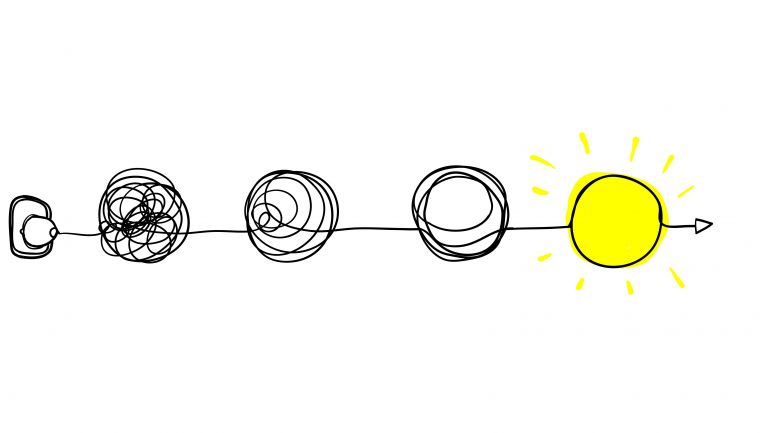Sign up for our monthly newsletter

Most organisations aren't good at customer research. Here's why.
It seems obvious but so many organisations don’t get it right. Why carry out customer discovery? Why do consumer research?
It’s to ask customers what they want, right?
Wrong.
Engaging with customers doesn’t just mean asking them what they want. Don’t forget, Henry Ford famously said: ‘If I’d asked people what they wanted they would have said ‘faster horses.’
You’ve got to be smarter than that.
During our work all over the world creating interventions around complex health and nutrition challenges, we’ve learned some fantastic lessons about why you carry out customer discovery.
And the answer holds true for virtually any business or organisation in any sector…
To destroy our assumptions about the customer.
I cut my teeth on mathematics, statistics, everything to do with numbers. Until I was 35, I worked on the assumption that if something was worth knowing it was worth putting into a mathematical equation. And then into an excel spreadsheet.
But I’ve come to an important realisation: If you just look at the beautiful numbers, just look at the stats, it can tell you what is happening.
But it doesn’t tell you why.
And it certainly doesn’t tell you how to do something about it.
Watch the game, not the scoreboard
Think about it this way: You wouldn’t go along to a sporting event and just watch the scoreboard all day. You want to see the game.
The scoreboard tells you what the score is, but it doesn’t tell you why it’s that way. You need to watch the game if you want to improve the performance of the team. Where’s the defence falling down? Where’s the attack falling down and so on.

Customer discovery is getting out and watching the game. You can look at a whole lot of figures about how your business is tracking but it won’t tell you why.
A message in a bottle
I met an industrial designer in a big American city. They had created this really innovative drink bottle. It’s designed to release a small amount of micronutrient each day. It has a timer and a release mechanism. It’s quite a sophisticated thing.
They designed this in a US city and thought it would be really great in Africa, helping children with malnutrition to get essential micronutrients (iron, vitamins etc).
To their credit they said: “we’ve designed this and don’t know if it will work”. They asked ThinkPlace to test it for them.
We took it out in the field in sub-Saharan Africa. What happened next was pretty interesting.
The bottle requires regular cleaning if it is to work. But for the people we were testing with, their water was not clean. And that water was more than one kilometre away. How keen were they to keep making that journey to wash it out?
And the kids in this village, they all share water. All the time. This special bottle is designed to only dispense one dose per day. How do we deploy it in a context where that’s just not how people drink?
You can’t. When you take this bottle, which works great in a nice air-conditioned office with running water in the USA and you take it to this new place where it is supposed to be used…
It doesn’t work.
When we put the product into a context something as simple as that bottle becomes part of a complex system with a whole lot of complex interactions.
That’s why you need to do customer research. Why you need to be aware of the context a design is going into.
Have hard conversations
We have been working on a project in Nigeria to increase the level of biofortified maize in the supply chain. This maize has been bred to increase the level of Vitamin A and we were seeking to increase scale of adoption.
Most of the people working in the supply chain were of the view that small holder farmers were solely interested in high yields. But when we spoke to local farmers there were so many other things they were concerned about.
Yes – they were interested in yield but in that part of the world they like to grow two crops per growing season. Would this new strain allow an early yield so they could plant millet afterwards?
They also like to cook their maize the day before they eat it, allowing it to ferment. Would this new strain react in the same way and create the taste they enjoy and expect?
They also use the straw from the maize plant to make bricks. Would the new maize have suitable strategy for their bricks?
In this case the project was being created with one objective in mind (increase yield) but in reality – when you talked to the small holder farmers– there were four. Probably more. Too often people don’t want to have those conversations.
We see it all the time:
What would patients in a hospital know about medical care?
What would children in out of home care know about how to structure that system?
They know a lot. The novice user is important. Everybody in your supply chain is important.
Often we don’t ask these kinds of users for their input because we assume they aren’t capable of giving us high-level insights. Or we presume we already know what they need and what will make their experience better. We don’t.
That’s what I mean when I talk about the purpose of this kind of research as ‘’destroying your assumptions about the customer.” A customer never exists in isolation. You need to understand their context. By talking to them and by observing how they live.
Asking these kinds of questions will help you make better decisions and save plenty of wasted time and effort. Whatever business you are in you need to always be asking:
What are we making? Will they buy it? Can we make money out of it?
As you answer these questions, your great idea could be on its way to becoming a great product.








